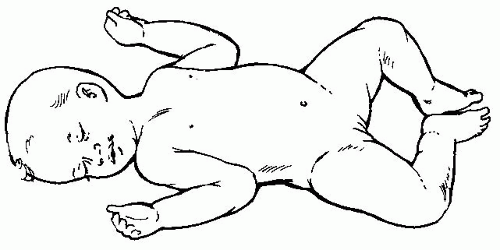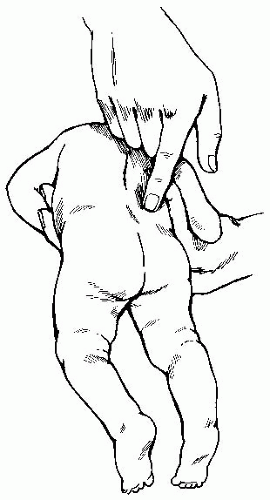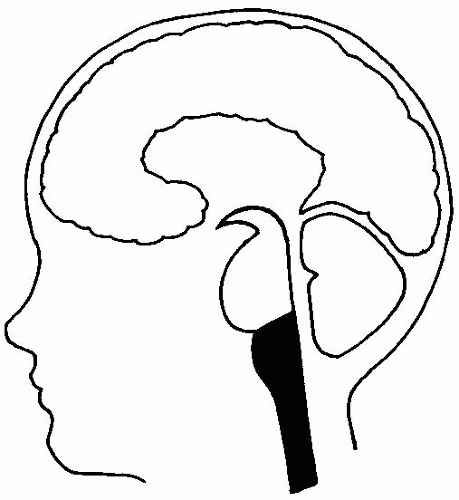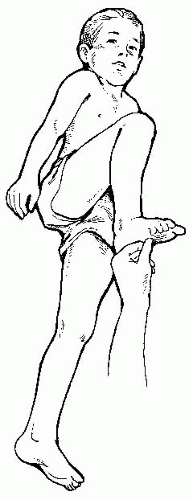Neurological Examination
Peter Thibodeau
The primary concern of the examining chiropractor is the evaluation of the health status of his patient with particular attention to homeostasis and allostasis (stressors placed upon the cells). The importance and uniqueness of the chiropractic neurological assessment are demonstrated by the fact that most chiropractors obtain clinical information related to the overall level of health expression and not merely search for the presence or absence of a disease state (adaptive physiology). Some say that a disease state is intelligent adaptive physiology.
In the chiropractic neurological examination, the examiner asks: Is there interference with the function of the nervous system? If so, where is it? What is it? What can be done about it? In addition, the examiner must ask, “Has the nervous system matured appropriately for the child’s age?”
Anatomic orientation is, of course, an intellectual exercise. Yet, knowing the suspected or actual location of the interference or lesion aids the doctor in planning a course of care that may lead toward the expression of optimal health (homeostasis). This is particularly true for the growing and developing body of the infant or child. One must approach the neurologic examination with an appreciation and understanding of the basic circuitry of the nervous system as was described in Chapter 9.
A major part of the evaluation of an infant is movement. Did certain movements appear at the appropriate time (milestones)? Are the developing and increasingly complex movements free and symmetrical?
As is often stated, life is movement. Movement and mechanical forces are important for homeostasis and remodeling of normal tissue (1). This is, of course, particularly true for the immature, growing neuromusculoskeletal system. Movement, and the stresses and forces it exerts, have an impact on the nervous system as the sensorimotor system develops. As will be discussed below, it may also have an impact on emotional development. One carefully observes the movements of infants, children, and adolescents during the evaluation, not only for current musculoskeletal asymmetries or conditions but also with a thought on the impact on and by the nervous system, for both the sensorimotor system and the possible impact on cognitive and emotional development.
Movements show more than neuromotor activity. An infant’s first movements clearly have emotional connotations. The sensory receptors that signal movement are directly connected to parts of the brain that generate emotions. From observation, we know that at around 2 years of age, even depictive gestures, such as learning to bow, or ritual gestures performed in religious and other ceremonies have emotional overtones (2).
Around the age of 3 to 4 years, children begin to learn spatial orientation and fine-tune their movements. They learn balance, direction, changes in force, and rhythm. Timing is being developed. Walking, running, balancing on a small chair, and learning rhythmic movement necessary for even simple dance movement become ingrained. They learn to think with their bodies so as to distinguish left or right and up and down movements and develop movements that are soft and gliding to those that are strong and explosive. They perceive that their body is a physical object, a “container,” that has clear boundaries and takes up space (2).
At 6 years, children understand that movements have psychological overtones. Through subtle and notso-subtle gestures, they can express sadness with a downturn of the head and a sigh, or they can appear to think by putting their hand under their chin. Every parent learns from their children these gestures directed toward them (2).
The intimate connection between social and cognitive development and the body has been well established to begin in early life. Touch has been shown to be powerful in experiments with preterm infants. The premature infant who receives extensive touch and care from caretakers shows demonstrably better social and
intellectual development later in infancy and during the preschool years than do infants who were offered minimal handling and care (2,3).
intellectual development later in infancy and during the preschool years than do infants who were offered minimal handling and care (2,3).
Piaget stated that the sensorimotor experience is the primary tool that the infant uses to gain knowledge of the world. For example, a 14-month-old infant who tugs on a blanket to bring her rattle closer is demonstrating her ability to use an object or tool to obtain another one, is engaging in what is called instrumental intelligence or “means-to-ends” knowledge. Another researcher suggests that we have two separate bodykinesthetic intelligences: one is a master coordinator of our body movements, while the other has the ability to skillfully manipulate objects (2).
The brain is not the sole executor of what our body is engaging in at any moment. It appears that we think with our entire body. Whatever we desire, believe in, or feel, is thoroughly expressed through our body’s actions and movements. In other words, our thoughts and feelings are expressed kinesthetically. We can decide to pick up a ball rolling to us, or not. We can smile or jump for joy, and thereby activate emotions. The skeletal muscles that we use to make a movement are under voluntary control, but when they are carried out by our will or thoughts, the muscles function as one of the organs of our mind (2).
Schmahmann’s work (4) on the cerebellum explores the connection between movement and thought. The cerebellum, known classically for motor activity modification, activates the vermis, flocculonodular lobe, and fastigial nucleus which has emotional and autonomic effects (4). The contribution of the cerebellum to cognition is not of generation but of modulation of nerve impulses.
Elevation of somatomotor activity increases proprioceptive input into the cerebellar nuclei. This input may be relayed directly to the hypothalamus (the primary visceral center of the brain), thereby alerting these cell groups to imminent requirements within the visceromotor system. This finding is important because somatomotor activity, for example, the chiropractic adjustment, is transferred to the hypothalamus, thereby eliciting an immediate visceromotor reaction (5,6). It has been reported (7) that asthma patients who undergo spinal manipulation displayed markedly decreased cortisol that continued into the post-treatment period. This suggests that a physiological response to the manipulative treatment increased that immunological activity.
NEUROLOGICAL DEVELOPMENT IN INFANCY AND EARLY CHILDHOOD
The neonate’s nervous system is not a simple system that spontaneously changes from its original level of immaturity to its final mature state. It follows a specific and sequential pattern as it matures, which is constantly subject to self-regulating mechanisms and stimuli from the external environment. If there is a failure in the self-regulating mechanism, or if there is toxic input from the external environment, the organism, when confronted by the new situation, can only respond by modifying the current stage of maturation through a mechanism of physiological adaptation. The system attempts to make optimal adaptation and is often referred to as the brain’s plasticity or dynamism.
Neurological integrity and maturation or development are intertwined. A mere cataloging of abnormal signs without reference to the developmental level of an infant is inadequate for making a decision as to the individual’s level of health or homeostasis. The process of maturational development itself may cause compensatory changes in such a manner that seemingly significant deviations from normal in infancy may leave no discernible residuals in later examinations. An analogous event is the orthopedic case of scoliosis. The chiropractor has the clinical experience of understanding the adaptability of the scoliotic spinal condition based upon the principles of dynamic homeostasis, but many children with scoliosis may not have had the opportunity for a chiropractic examination. The chiropractor has the adaptability of the scoliotic spinal condition based upon the principles of dynamic homeostasis, but many children with scoliosis may not have had the opportunity for a chiropractic examination. They receive a diagnosis of scoliosis, which may result in rods, staples, and clips placed in their spine. Highly invasive interventions such as these without regard to this principle may produce disastrous results. In many of these cases, proper management with little or no invasive interventions to aid the natural process of adaptation allows the child to grow up into a normal, healthy individual. The static and dynamic development from neonate to adulthood depends upon the maturation process and integrity of the nervous system. This process of development is determined by our genome and lifestyle choices, which results in patterns of behavior that are derived from stimulation via the environment and the individual’s adaptation to the environment. The chiropractor needs to consider the adaptive physiology of the developing child, and have a good knowledge of the needs of the child in providing sufficiency and purity to the cells of the infant’s body. The inclusion of diet and movement are paramount in the evaluation of the infant, child, and adolescent.
The developmental and neurologic examination of the infant and young child differs in several respects from that of the adult. Initially, a neurologic abnormality in an infant is usually diffuse rather than localized. There may be a continuum of damage that can range from minimal to severe. The sequelae may be a variety of neurological, and possibly, psychological adaptations that may be looked upon as abnormalities. They might also be looked upon as intelligent innate adaptations.
Nonetheless, whether we see them as abnormalities or intelligent adaptations, they should be noted.
Nonetheless, whether we see them as abnormalities or intelligent adaptations, they should be noted.
 FIGURE 11-1 Normal motor development in infants and small children. Modified from Mumenthaler M. Neurology (3rd ed). New York: Thieme Medical Publishers, Inc., 1990; p. 2. |
Evaluating the Developing Sensorimotor and Neuromusculoskeletal Systems
The findings during the neurologic examination differ significantly as the child develops and the nervous system matures. One examines both the neurological development toward maturity and any deviation from normal development.
At birth, the undeveloped central nervous system (CNS) functions somewhat at the cortical levels. Further, cortical functions develop slowly and cannot be fully tested until early childhood. Therefore, in the neurologic evaluation during the newborn and early infancy period, establishing whether there is normal brainstem and spinal function does not necessarily imply an intact cortical system, as cortical abnormalities may exist without concomitant brainstem or spinal cord abnormalities (8).
Infants are initially reflexive in nature, yet they exhibit some cognitive characteristics. These characteristics or traits show curiosity in face-like objects (thinking kinesthetically). Normally, they should respond to sound and turn their head toward it and also be able to distinguish their mother from other people (9). The healthy neonate is born with a predominately flexor tone; for that reason, physiologic flexion contracture is normal.
There are wide variations in the times during which developmental “milestones” are achieved, and there are numerous reasons for delays. The diagnosis of developmental delay can be difficult to make (9). A child may exhibit delays in acquiring certain skills, and, on the other hand, may exhibit unusual rapidity in acquiring others (9). When a delay is discovered, it must be documented and its cause investigated. This is important, because it may signal a potential neurological deficit (Fig. 11-1).
NEONATE OR INFANT NEUROLOGICAL EXAMINATION
Responses to stimuli form a large part of the neurological examination of an infant. These responses include the Moro response, Dazzle reflex, dorsal reflex, Landau sign, Babinski sign, plantar and palmar grasp response, rooting reflex, extension reflex of the fingers, stepping response, placing response, tonic neck response, neck righting reflex, blink reflex, jerking reflex to sound, knee jerk, clonus, and parachute response, among others (many of these will be described later in the chapter). Appendix 10.1 is a summary of the neurological examination.
The neurological screening tests of an infant may include, but are not limited to, positioning, spontaneous and induced movement, crying, knee and ankle tendon reflexes, and elicitation of rooting, grasp, tonic neck, and Moro automatisms. The infantile automatisms normally disappear in early infancy. Absence of infantile automatisms in the neonate or their persistence beyond the expected time of their disappearance may indicate nervous system interference (8,10,11). Neonates with neurological abnormalities, and those at risk for CNS interferences require comprehensive neurologic evaluation at frequent intervals.
The clinician must proceed in a relaxed manner and display calmness with the patient and parent(s). The room environment and temperature should be comfortable. It is not recommended to examine the child immediately postprandial or before feeding because feeding can change the level of the congenital reflexes.
Keen observational skills are vital when examining the neonate, infant, child, or adolescent. The clinician must bear in mind that the level of maturity and integrity of the nervous system and the child’s level of communications skills will affect the elements of the neurologic evaluation.
Keen observational skills are vital when examining the neonate, infant, child, or adolescent. The clinician must bear in mind that the level of maturity and integrity of the nervous system and the child’s level of communications skills will affect the elements of the neurologic evaluation.
It is important to give that part of the exam least disturbing to the infant or neonate first. Observation is the least invasive part of the evaluation. Observe the infant’s position and movements for normal autonomic reactions. The infant is placed prone with the upper extremities alongside the torso. One or both arms will be normally and spontaneously brought forward so that the hands lay level with a shoulder or face. Initially, this position is typical, and often only occurs, on the side the face is turned toward. This reaction may be facilitated by applying pressure to the opposite buttocks. The examiner may also notice that the infant may turn his head to one side or alternately rotate the head side to side. The infant may attempt to raise his head and/or perform a creep or crawl motion with the lower extremities. The creep motion may be stimulated by gentle pressure on the soles of the feet. The response may be vigorous enough to propel the infant forward. These motions are expected in a normal infant (12,13,14,15,16).
The neurologic examination of the newborn and infant is based upon the same scheme as is used for the older child and adult:
1. Cranial nerves (CNs)
2. Motor function
3. Reflexes
4. Sensations
It should be noted that the neurologic status of the newborn has some special features. The mainstay of the investigation is the analysis for congenital reflexes, which reflects the maturity of the CNS, the viability of the newborn, and its adaptation potential.
Congenital reflexes of newborns are very labile and are easily fatigued. Therefore, one should elicit the reflexes quickly.
Tone
During the prenatal period (from the 20th to 28th week of gestation to the 7th to 28th day after birth) and later, changes occur in the tonus and the consistency of primary or automatic reactions of the growing infant that are reflected during periodic examinations. Flexor tonus of the extremities increases with maturation from the more caudal muscles to those more cephalad. The posture of the most premature infant of around 28 weeks of gestation is commonly one of extension (or deflexion) of all limbs. With further maturation, tonus increases in the lower extremities. By the 35th week, the infant lies primarily with the legs flexed and the arms extended in the “frog position” (15). The normal development pattern progresses to increased upper extremity flexor tonus. As the tonus increases, the range of spontaneous movement diminishes. Brett states that the free, windmill-like movements of the early premature infant will gradually diminish to the relative immobility of the term infant who may be described as “a prisoner of his own tone” (16).
Look for signs of aberrant tone, that is, hypotonia and hypertonia, conditions that are easily recognized (Fig. 11-2) (see also Chapter 26 and 27). The signs of either are nonspecific and may be a result of dysfunction at any point along the entire neuraxis. The cerebral cortex, basal ganglia, cerebellum, spinal cord (including the anterior horn cell), nerves, and even muscles and ligaments are suspect. During the observation phase of the examination, a finding of unusual joint laxity may accompany the hypotonia or “floppiness” of differing etiologies and is occasionally quite dramatic to the point of becoming the chief complaint. This laxity may even be confused with Ehlers-Danlos syndrome, a collection of inheritable collagen diseases with hyperextendable joints and skin but is usually near normal strength (17,18). Differentiation must also be made from infantile spinal muscular atrophy or Werdnig-Hoffman disease, a condition affecting the anterior horn cells of the spinal cord without involvement of the cerebral cortex
(see also Chapter 13). Werdnig-Hoffman disease is marked by delayed motor milestones (16,17,18,19,20,21). Oppenheim, in 1900, described a condition, “amyotonia congenital,” which is a congenitally diffuse muscular weakness with atrophy of the muscles and decreased or absent deep tendon reflexes that tended to improve. This condition can be differentiated from Werdnig-Hoffman disease by electromyography (EMG) studies and the fact that Werdnig-Hoffman disease is progressive and usually fatal by age 5 years (22).
(see also Chapter 13). Werdnig-Hoffman disease is marked by delayed motor milestones (16,17,18,19,20,21). Oppenheim, in 1900, described a condition, “amyotonia congenital,” which is a congenitally diffuse muscular weakness with atrophy of the muscles and decreased or absent deep tendon reflexes that tended to improve. This condition can be differentiated from Werdnig-Hoffman disease by electromyography (EMG) studies and the fact that Werdnig-Hoffman disease is progressive and usually fatal by age 5 years (22).
Hypotonia is a generalized decrease in muscular activity and can be measured by the overall amount of muscular activity. Hypotonia can be concluded if an infant presents with little or no spontaneous movement, does not adjust to postural demands, and has little resistance to passive extremity movements (17,21,22). On passive range of motion of the upper extremities, there is some tone, but the tone is significantly less than expected. Shaking the hand back and forth demonstrates the decreased tone in the hand.
In contrast, the hypertonic state may result in spasticity and rigidity in response to postural changes and passive movements, as well as increased spontaneous activity (22,23,24). Muscle tone and floppiness should be graded as weakness or true hypotonia. For accuracy, tone must be assessed in the alert but not over-aroused infant. Resistance offered to passive movements is a subjective finding and must be correlated to the state of arousal. Bilateral comparisons of extremities, trunk, and neck should be evaluated.
Diminished tone occurring with normal strength is indicative of CNS involvement. Many infants with central hypotonia will later develop excessive tone. The hypertonia may be localized to specific areas with other areas remaining hypotonic. When this is seen, the examiner should pay particular attention to the thumb adductors, wrist pronators, and hip adductors, which are often the first to stiffen. Cortical thumb and leg scissoring is often observed in early cerebral palsy (17,18,21,24).
Strength
The strength and tone of the neck extensors can be tested by having the baby in the sitting position and the neck flexed so the baby’s chin is on the chest. The baby should be able to bring the head to the upright position. The neck flexors can be tested by having the head in extension, while in the sitting position. The baby should be able to bring the head to the upright position. These tests are an extension of the test for head lag and are done at the same time.
In the assessment of strength, the crying baby will usually provide the most accurate information. Bilateral comparison is important. In the adult and older child, the five-point motor strength grading scale can be used, but this scale cannot be applied to the infant and younger child. In this case, strength can be documented by noting the heaviest toy or other object that the infant can pick up (18,21,24). The distance that a particular extremity can be extended or the amounts of truncal tilt before the head loses support should be noted. A uniquely chiropractic procedure is for the examiner to hold the infant up under the armpits, face-to-face, and slowly tilt the trunk to the left, right, forward, and backward, noting any asymmetries in head support.
Weakness
Pulling the baby from the supine to the sitting position demonstrates significant head lag. Also the arms are fully extended so there is no pulling or resistance with traction. The baby fails to bring the head to the upright position once he or she is in the sitting position.
The presence of weakness must be graded as it generally implies motor unit involvement. Central involvement may be present since weak infants are also hypotonic. In the previously mentioned Werdnig-Hoffman disease, the muscles of the face, diaphragm, and pelvic sphincters are classically spared (25). In general, infantile myasthenic syndromes preferentially affect the bulbar and oculomotor muscles. Most myopathies tend to affect proximal limb muscle function more than fine distal movements of the digits (25).
Primary and Automatic Reactions
Most of the repertoire of primary or automatic reactions observed in the normal infant is mediated at the subcortical level; some are even obtainable in the patient with anencephaly (15). An exception is the placing response, which is described as flexion followed by extension of the leg. This occurs in a normal infant, 6 weeks of age and younger, who is held erect, and the examiner allows the dorsum of the foot to be drawn along the underedge of a tabletop. The placing reaction is typically absent in all four limbs of children with mental ages of <4 months (IQ < 28) (16). Animal studies show that the placing reflex is dependent upon the presence of a considerable amount of cerebral cortex, particularly in the parietal lobe area 4 of the postcentral gyrus (note that this area is sensory) (16). Establishing the neuroanatomical location in the cerebral cortex helps to explain this association between a postural reflex and cognitive development (heretofore, this was thought of as peculiar, but a growing body of evidence points to cognitive and motor movements as integrative). Therefore, it has been concluded that the absence of the placing reaction is an index of severe mental retardation (13,15) (Fig. 11-3).
The doctor should examine for dysembryological stigmata that are not uncommon. The following are
some examples: abnormal earlobes (low amount of helixes, absence of earlobes, elongated upper earlobe “rabbit’s ear,” and low-set ears), wide nose bridge (hypertelorism: increased distance between the eyes), prognatism (forward jutting of the jaw), and low hair border.
some examples: abnormal earlobes (low amount of helixes, absence of earlobes, elongated upper earlobe “rabbit’s ear,” and low-set ears), wide nose bridge (hypertelorism: increased distance between the eyes), prognatism (forward jutting of the jaw), and low hair border.
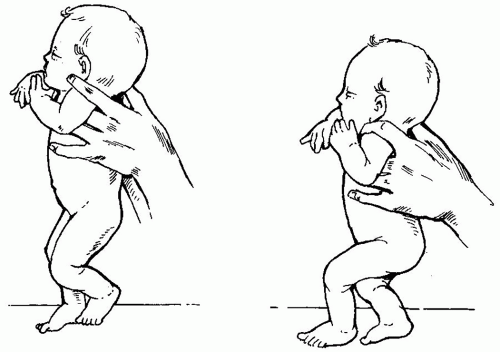 FIGURE 11-3 Placing response. Modified from Bates B. A Guide to Physical Examination and History Taking (5th ed). Philadelphia, PA: J. B. Lippincott Co., 1991; p. 630. |
Attention should also be paid to the head shape. Examples of altered head shape include: dolichocephalism (longheaded), brachiocephaly (flattening of the back of the head), plagiocephaly (uneven development of the head) (see also Chapters 13 and 34), tower-like skull, and left or right inclinations, are all variants of a normal skull. At times, head deformities are caused by cephalohematoma, or birth swelling. Associated asymmetry of the head and face bones suggests intrauterine pathology that typically occurred at a stage of embryonic development.
Head Size and Increased Intracranial Pressure
Head circumference should be measured. It can vary significantly: between 33 and 27.5 cm. When analyzing head circumference, one should take into consideration height, weight, and the head circumference-to-chest diameter ratio. At birth, the head circumference should not exceed the chest diameter by more than 1 to 2 cm (26). The average head circumference of a newborn, whose weight is 3,000 to 3,500 g and height is 50 to 52 cm, is about 36 cm (26). At times, the newborn’s head circumference may be less because of overriding skull sutures.
The head circumference should grow 4 cm in the first 3 months, that is, at 3 months, the skull should measure approximately 40 cm (26). In the first month, the head circumference increases by 2 cm; by the second month, 1.0 to 1.5 cm; and by the third month, 1 cm (26). During the subsequent 3 months, the head circumference increases by 3 cm, so by age 6 months, it should be about 43 cm. By 1 year of age, it should measure 46 cm, or 3 cm larger than at age 6 months (26). During the first year of life, the head circumference increases by 10 cm (26).
The frontal fontanel is palpated. Its size should not exceed 2.5 cm × 3.0 cm. Coronal and sagittal sutures should be palpated as well. The coronal suture is normally closed at birth. The sagittal suture is sometimes open at birth but should not be wider than 0.5 cm.
When there is a tense and bulging anterior fontanel or opening of the sagittal suture of more than 0.5 cm, one should suspect intracranial hypertension. Intracranial CNS lesions may lead to postural abnormalities,
particularly, persistent asymmetries, such as, predominate extension of the extremities and constant rotation of the head to one side (8,11,26). Marked extension of the head, stiffness of the neck, and extension of the extremities (opisthotonus) are indicative of significant meningeal or brainstem irritation, as is seen in intracranial infection or hemorrhage (12,13,28).
particularly, persistent asymmetries, such as, predominate extension of the extremities and constant rotation of the head to one side (8,11,26). Marked extension of the head, stiffness of the neck, and extension of the extremities (opisthotonus) are indicative of significant meningeal or brainstem irritation, as is seen in intracranial infection or hemorrhage (12,13,28).
Symptoms suggestive of intracranial hypertension include the following:
Tower-like skull with high forehead (Socrates head)
Dolichocelphalic skull with a prominent occiput—the child tends to hyperextend the neck due to increased tonicity of extensor muscles
Wrist tremor with a tendency for finger extension
Graefe’s sign
Setting sun sign
Graefe’s and setting sun signs (Fig. 11-4) should be distinguished from each other in spite of their similar presentations. Graefe’s sign is a band of white sclera superior to the iris when the eyes are stationary. In the absence of other signs and symptoms, Graefe’s sign is not indicative of intracranial hypertension. It is frequently seen in premature infants with exophthalmoses and hypotrophia (harmonious or disharmonious development (29).
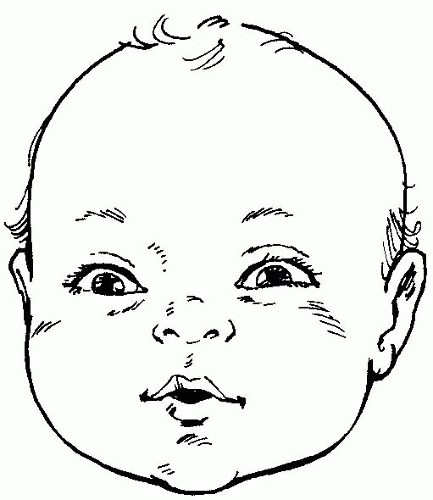 FIGURE 11-4 Setting sun sign. Modified from Haynes U. A Developmental Approach to Case Finding. Washington, DC: U.S. Department of Health, Education, and Welfare, 1967. |
Setting sun sign refers to the downward deviation of an infant’s or a young child’s eyes as a result of pressure on CN III, IV, and VI. With this late and potentially ominous sign of increased intracranial pressure (ICP), both eyes are rotated downward, typically revealing an area of sclera above the irises. Occasionally, the irises appear to be forced outward. The pupils react sluggishly, responding to light unequally. The infant with increased ICP is typically irritable and lethargic and feeds poorly. There may be changes in the level of consciousness (LOC), lower extremity spasticity, and opisthotonos may also be obvious. Increased ICP typically results from space-occupying lesions, such as, tumors or from an accumulation of fluid in the brain’s ventricular system, as occurs with hydrocephalus. It also may be due to intracranial bleeding or cerebral edema. Other signs include a globular appearance of the head, a loss of upgaze, and distended scalp veins.
Setting sun sign may be intermittent. For example, it may disappear when the infant is upright, because this position slightly reduces ICP. The sign may be elicited in a healthy infant younger than age 4 weeks by sudden changes to his head position. In a healthy infant up to age 9 months, it may be elicited by shining a bright light into the eyes and then removing it quickly. This is important because many or all these signs are meaningless in and of themselves. It is similar to blood pressure: sometimes it is up and necessary and sometimes it is down and necessary depending upon the situation the body is in. So all of these signs need to be confirmed with other data.
Birth Shock
Some examiners have observed a period of neurologic shock in the newborn immediately after birth, which may last up to 24 to 60 hours (30). The most prominent neurologic finding during this period of birth shock is poor muscle tone, although not as extreme as is found in pathological cases of shock, atonia, and mongolism (28,30). When the examiner palpates the skin of a newborn whose muscle tone is still poor, the sensation is not unlike that of a feather quill or the skin of an overripe fruit. There may also be findings of minimal resistance to movement and postural attitudes that may be characterized as pretonic in nature (28).
The birth shock period is considered by some to be physiological. Others feel that it is due to anoxia and traumatizing mechanical factors that inhibit the normal functions of the nervous system. Escard and de Coriat (30) found that appropriate psychoprophylactic care given to the mother during pregnancy may decrease this period of birth shock by allowing the mother to concentrate and consciously focus her muscular efforts without fear. This, of course, would impart a less stressful
response to the fetus and would shorten the uterine contractions that impinge against the newborn’s body, particularly the head. These researchers speak of the “painless childbirth” as a benefit of appropriate psychoprophylactic care (30).
response to the fetus and would shorten the uterine contractions that impinge against the newborn’s body, particularly the head. These researchers speak of the “painless childbirth” as a benefit of appropriate psychoprophylactic care (30).
Avoiding sedatives and anesthesia, decreasing muscle tension, and perhaps improving the emotional attitudes of the mother and others attending the birth may stimulate neuroreceptors in the newborn, which may influence the activities of the CNS beginning early in intrauterine life. Because intensification of the birth shock to pathologic levels may threaten the neurologic future of the newborn, steps to reduce the duration of this shock period may assure a better prognosis (30).
After the period of birth shock, the examiner begins the evaluation by observing the newborn at rest for spontaneous movements, palpable fissure equality, and the eye for abnormalities, such as, setting sun sign or other signs of neurologic deficits. These signs include writhing baby syndrome, myoclonus, flaccidity, jitteriness, and irregular development, among others.
In the normal newborn, the purposeless movements of the extremities are associated with well-defined muscle tone in spite of the lack of motor skills. Additionally, the normal newborn has a well-developed ability to suck and swallow.
Sensory Examination
The usefulness of the sensory examination in the child is usually limited. Thresholds for touch, pain, and temperature are high in older children, and reactions to these stimuli are relatively slow. Gross sensory testing can be useful. Absence of the withdrawal response when a painful stimulus is applied to an extremity is indicative of paralysis. If a painful stimulus produces a facial change or induces crying without a withdrawal response, the examiner would suspect paralysis rather than anesthesia. Interference in the spinal cord may cause a withdrawal response to a painful stimulus without a change in facial expression or crying, which would indicate anesthesia rather than paralysis (14,15,26,28).
Cranial Nerve Testing
Cranial nerve testing is performed as in the adult, although it might be challenging to assess the optic and auditory nerves. The hypoglossal nerve (CN XII) is easily tested in the infant by pinching the nostrils. There should be a reflexive opening of the mouth and elevation of the tip of the tongue. If a CN XII paresis is present, the tip of the tongue will deviate toward the affected side (27).
Deep Tendon Reflexes
Testing deep tendon reflexes is an important part of the newborn neurological exam. They can be technically difficult to do. Use a reflex hammer, not a finger or a stethoscope. Ideally, the baby is in a quiet alert state with the head in the midline. The head turned to one side can reinforce the tone and reflexes on that side. Take control of the leg with the hand under the knee and the leg at about a 90-degree angle at the knee. The examiner gently taps the patellar tendon. Generally, deep tendon reflexes are easily obtained at the biceps, knees, and ankles. Other reflexes may be more difficult to obtain. The floppy child with hyperactive reflexes almost certainly has central nerve system dysfunction, as in the case of the hypotonic infant with normal strength (17,21,25). Muscle disease is characterized by both hyporeflexia and weakness (17,21,25). If the reflexes are completely absent and not proportional to the amount of weakness, neuropathy or central nerve system disease is suspected. Hyperreflexia implies interference between the cortex and anterior horn cells in the spinal cord (so-called upper motor neuron), and hyporeflexia implies interference between the anterior horn of the spinal cord and the muscle (lower motor neuron).
Hyperactive Reflexes (Hyperreflexia)
Absence of deep tendon reflexes is a much more important finding than hyperreflexia in the newborn. A normal newborn can have hyperreflexia and still be normal, if the tone is normal, but absent reflexes associated with low tone and weakness is consistent with a lower motor neuron disorder. Preserved or exaggerated reflexes associated with low tone is the hallmark of what is called central or cerebral hypotonia, and the cause is an upper motor neuron lesion.
In older children and adults, an upper motor lesion causes spasticity, but in babies, an upper motor neuron lesion can cause hypotonia. A disease of the lower motor neuron is unlikely if the deep tendon reflexes are present. Frequently, the examiner will find children with exaggerated reflexes that might be considered hyperactive, but hyperactive reflexes in the presence of downgoing toes upon plantar stroking are usually normal (17,21,23,31). If hyperactive reflexes truly reflect pyramidal tract interference, the toes should also respond abnormally, that is, upgoing using plantar reflex (Babinski sign) to determine the reaction of the toes does not always yield good results, despite the popularity of this test. Chaddock maneuver (stroking the dorsolateral aspect of the foot) (23,31) may be used to elicit a Babinski-like response with much more accuracy (23,31). Contraction of the tensor fascia lata following stroking of the sole of the foot suggests pyramidal tract dysfunction (23,31).
It should not be confused with contraction due to withdrawal of the foot. Abdominal reflexes (stroking the skin adjacent to the umbilicus) may be absent on the side of pyramidal tract dysfunction (23,31). In children with hyperactive reflexes, it is important to check for the presence of a jaw jerk. Its presence suggests bilateral interference above the midpons, which would affect the motor division of CN V (23,31).
It should not be confused with contraction due to withdrawal of the foot. Abdominal reflexes (stroking the skin adjacent to the umbilicus) may be absent on the side of pyramidal tract dysfunction (23,31). In children with hyperactive reflexes, it is important to check for the presence of a jaw jerk. Its presence suggests bilateral interference above the midpons, which would affect the motor division of CN V (23,31).
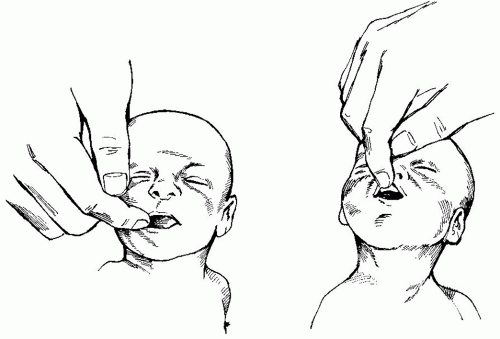 FIGURE 11-5 Rooting reflex. Modified from Paine RS. Neurologic examination of infants and children. Pediatr Clin N Am 1960;7(3):483. |
Unilateral upgoing toe (using Babinski or Chaddock maneuvers) or hyperreflexia suggests interference to one side of the nervous system. The examiner must determine whether this is indicative of an old lesion or a recent one. The history becomes important. Was the birth difficult? Have there been neonatal complications? An otherwise normal appearing child may have unilateral hyperreflexia due to birth injury or mild cerebral palsy. Looking for asymmetry in extremity development or handedness may reveal a clue (17,23,31). Left-handedness may indicate left hemisphere involvement. Unilateral hyperreflexia may be a result of an old neurologic lesion, meningitis, head trauma, or even uncomplicated subdural hematoma (17,23,31). Other than cerebral palsy, hydrocephalus, or parasagittal intracranial mass, hyperreflexia in the extremities suggests interference or lesion at the cervical cord or higher (17,23,31). Hyperreflexia in the lower extremities suggests interference at cord levels below the cervical cord; bilateral hyperreflexia suggests bilateral interference in the pyramidal tract (17,23,31). Tumors, bony abnormalities, and perhaps non-CNS tumors, among other space-occupying masses may be etiological factors (17,23,31).
Hypoactive Reflexes (Hyporeflexia)
Suck, Root There can be some sucking but it may not be as vigorous or sustained as it should be. There may be no root reflex, which is a definite abnormality, and a baby may have problems with feeding (Fig. 11-5).
Moro The baby has a Moro reflex with the arms fully abducted and extended but does not bring the arms back to the midline. So the Moro is present, but not as complete as it should be (Fig. 11-6).
Galant The baby has a normal Galant or trunk incurvation reflex (Fig. 11-7). The trunk and hips move toward the side of the stimulus.
Hyporeflexia is usually indicative of peripheral nerve interference; although, it is seen when any component of the reflex pathway is abnormal. It may be necessary to perform the Jendrassik maneuver (if appropriate, have the child clasp his or her hands together and try to pull them apart, make a fist, or bite down) to elicit
a response or reinforce the reflex (23,32). Occasionally, the examiner may be presented with an otherwise normal child who displays hyporeflexia without an obvious cause. Areflexia may be seen in the initial stages of cord damage, which may be traumatic, vascular, or neoplastic in origin. Hyperreflexia may be seen in later stages (24). Hyporeflexia may be seen in later stages of myopathies (24). Weakness from muscle disorders is generally proximal (hip and shoulder), while weakness from peripheral nerve involvement is usually distal (hand and foot) (24).
a response or reinforce the reflex (23,32). Occasionally, the examiner may be presented with an otherwise normal child who displays hyporeflexia without an obvious cause. Areflexia may be seen in the initial stages of cord damage, which may be traumatic, vascular, or neoplastic in origin. Hyperreflexia may be seen in later stages (24). Hyporeflexia may be seen in later stages of myopathies (24). Weakness from muscle disorders is generally proximal (hip and shoulder), while weakness from peripheral nerve involvement is usually distal (hand and foot) (24).
General Movements
When observing an infant, the examiner may notice changes in general movements (GM). One study videotaped the spontaneous motility in the supine position of a group of 22 full-term healthy infants aged 2 to 18 weeks at 4-week intervals (33). Each follow-up session included a neurological examination. In the newborn infant, the GM had a writhing quality to it; the movements were characterized as tight in quality, slow speed, and of limited amplitude. The writhing character gradually evolves into a so-called fidgety character. This fidgety character was almost constant by the age of 8 to 12 weeks. In the third month, very rapid hand movements (swipes and swats) were seen. The developmental changes in the form of the GM and those of the neurological repertoire showed no significant correlation. However, studies on the development of head and eye movements in early infancy illustrated that the communication between the visual, vestibular, head, and eye movement systems showed a marked shift between the second and third month of life. It has been suggested that the changes in visuomotor behavior, including the appearance of steady fixation and brisk orienting reactions, reflected the establishment of functional connections between different cortical areas and between the cerebral cortex and the tectum (33,34).
Reflex Testing (Behavior Patterns)
Feeding behavior is best demonstrated and exhibited by the infant after spontaneous awakening (known as the Gentry-Aldrich Rooting Reflex) (35). Gentry and Aldrich have demonstrated that the newborn infant who is in deep sleep does not exhibit the rooting reflex. The rooting reflex is opening of the mouth and rotating the head toward the side of constant light pressure or light stroking on the cheek. It should not be confused with the side-to-side head movement or the head turning from the preferred side upon stroking (35). Sleeping, dozing, and crying will interfere with the rooting reflex. The rooting reflex disappears at about 4 months of age.
The sucking response is elicited by touching the infant’s lips. Drowsiness depresses the sucking response. Gentry and Aldrich (35) found that the best time for feeding is after spontaneous awakening and is essentially governed by real need. The infant always awakens when he or she needs to eat, but will not always need to eat when awake.
The baby should have a strong coordinated suck reflex with good stripping action of the tongue. There should be resistance to pulling out the pacifier. A root reflex is obtained by gently stroking the cheek toward the lips. The baby should open the mouth toward the stimulus and turn the head to latch on to the object.
Correlation of Reflex Tests with CNS Development
Spinal Level Reflexes at the spinal level are mediated in the CNS by Deitersí’ nucleus which is located in the lower one-third of the pons (31). Spinal reflexes are considered phasic because there is movement, which coordinates muscles of the extremities in either total flexion or extension (31). During the first 2 months of life, positive or negative reactions to spinal reflex testing may be present in the normal child (31). After 2 months of age, persistence of positive reactions may be indicative of delayed maturation of the CNS. At this point, negative reactions are normal (31). Apedal (prone or supinelying) positions are a result of complete domination by these primitive spinal reflexes (31) (Fig. 11-8).
Withdrawal Response to Stimulus The infant is placed in the supine position. An irritating stimulus is applied to the foot. A negative response is volitional withdrawal or a controlled maintenance response. A positive reaction consists of uncontrolled flexion of the tested leg, which is not to be confused with a reaction to tickling. A positive reaction is normal up to 2 months of age. Delayed reflexive maturation is suspected if a positive reaction continues after 2 months of age (19,31) (Fig. 11-9).
Extensor Response to Stimulus The child is tested in the supine position. The head is kept in the neutral position and one leg is extended and the other flexed. A stimulus is applied to the sole of the foot on the side of the flexed leg. A negative reaction is the leg maintained in controlled flexion. A positive reaction is an uncontrolled extension of the stimulated leg. Do not confuse this with a tickling reaction. A positive reaction is normal only up to age 2 months; after that, it is indicative of delayed reflexive maturation (27,28,31) (Fig. 11-10).
Contralateral Extension to Stimulus The infant is positioned as per the extensor thrust response. In this test, the stimulus is applied by flexing the extended leg. A negative response is the continuation of the flexed position of the contralateral leg. A positive reaction is extension of the contralateral flexed leg. A positive reaction is normal up to the age of 2 months and is abnormal after that (27,28,31).
There is an alternate method of testing this response. The infant is in the same position. The stimulus is applied by tapping the medial surface of one leg. There should be no response. A positive reaction is adduction and internal rotation of the contralateral leg along with plantar flexion of the foot. This is typical of the scissor position. A positive reaction is normal up to age 2 months; a positive reaction beyond this point is indicative of delayed reflexive maturation (27,28,31).
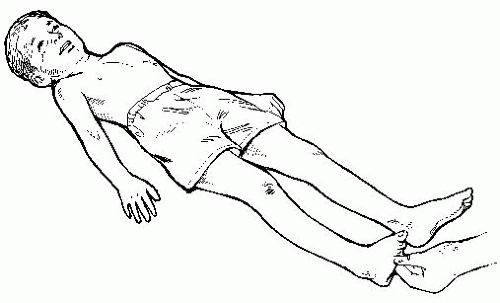 FIGURE 11-10 Extensor thrust—positive reaction. Modified from Fiorentino MR. Reflex Testing Methods for Evaluating CNS Development (2nd ed). Springfield, IL: Charles C Thomas Publishers, 1973; p. 10. |
Brainstem Level From the caudal level of the basal ganglia down to Deiters’ nucleus is an area of the brainstem where the following reflexes are mediated (Fig. 11-11). These brainstem reflexes are static. They are postural responses, a response to changes in the position of the head and body in space (responding to stimulation of the labyrinths), or in the head position relative to the body (proprioception in the cervical spine) (27,28,31). During the first 4 to 6 months, positive or negative reactions to the brainstem responses are normal. Positive reactions persisting beyond 6 months of age suggests delayed motor maturation of the CNS. Negative responses are normal. Complete domination by these responses results in a pedal posture (27,28,31).
 FIGURE 11-12 Extremity response to head rotation or asymmetric tonic neck reflex. Modified from Brett EM (ed). Pediatric Neurology. New York: Churchill Livingstone, 1991; p. 8. |
Extremity Response to Head Rotation




Stay updated, free articles. Join our Telegram channel

Full access? Get Clinical Tree



